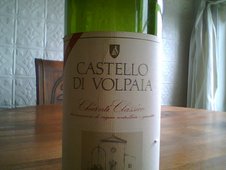I began the column almost exactly three years ago. The first bar I visited, the nondescript Lilly Coogan's in the East Village, has since closed. Some 75 bars later, I covered taverns in four boroughs (sorry, Staten Island), from dives to Irish pubs to (ugh) sports bars, and went through about four or five Eater photographers. (They didn't necessarily love me when I chose joints in Far Rockaway and Inwood.) The column gave me the opportunity to say proper goodbyes to the Holiday Cocktail Lounge (gone) and Bill's Gay Nineties (on its way out) and discover what is arguably New York's oldest bar (Neir's in Woodhaven). Least favorite bar I visited? Tonic East. If that three-story Murray Hill frat party implodes upon itself and disappears, like that house in "Poltergeist," I'll be just fine with it.
A Beer At...Caskey's Tavern
Caskey's Tavern sits on a little bend of Fresh Pond Road, where Ridgewood, Queens, begins to turn into Glendale. It's 70 years-old and has always been owned by the Caskey family. The neon sign is worthy of comment. It's only says "Tavern"—not "Bar," as is usually the case. And the font is thick and casual, as if written by a red neon crayon. Next to the word is a tilted glass, not quite a cocktail coupe, not quite a wine glass, and whatever the contents are, they are aflame.
Inside, the old, beautifully carved darkwood bar is the main testimony to Caskey's age. That and the shuffleboard table, which the woman behind the bar said she believed was the the last one left in Queens. (The only other one I've found in the course of writing this column was at Plug Uglies.) Otherwise, the ceiling and floor and walls are on the modern, drab side. A large, bulbous, sloping jukebox sits near the door like a music-spewing Jabba the Hutt. There's evidence that at some point Caskey enlarged the place, because everything in the big room past the bar smacks of modern work, the kind of pool/darts area you'd find in any bar in NYC.
The blonde, veteran bartender, who said she worked Sundays through Wednesdays, divided her time between the Daily News and "The Godfather II" on the television. "Do you ever come here on the weekends?" asked a garrulous barfly, who was itching for some lively conversation. She looked at him like he was nuts. "No," she said. "Do you go to your place of employment on your days off? I go to a different bar, a bar where they treat me better."
Two young men came in, skateboards under their arms. They knew the bartender and greeted her warmly. "How are you doing?" she asked. "Great. We'd like two beers." "Great. And I'd like two IDs." The two gabby drinkers went out to the back patio for a smoke. "Maybe now we can hear the movie," said the bartender. I complimented her on the wonderful old bar. She said she, too, loved the woodwork, and lamented that some people actually paint over such beauty. She said she likes to watch "This Old House," because she likes to know how to do things, should she ever actually own a house.
On the long subway ride out to Ridgewood, I had been reading "The Old-Time Saloon," a reminiscence of the pre-Prohibition taverns by George Ade, a early 20th-century humorist. As I looked at the neglected, dusty bottles of spirits behind the bar at Caskey's, I thought of this passage: "Gin was the dominating theme song of most of the well-known cocktails but your typical dispenser in the saw-dust places didn't want to fuss with cocktails and he had a certain contempt for them as a weak substitute for honest to goodness liquor and fit only for dudes and weaklings."
I looked at the beer signs on the walls. "The average saloon," wrote Ade, "received from the brewery gorgeous lithographs and hugh, glittering street-signs. The better-known brands of beer were featured in highly expensive advertising campaigns."
Not much has changed.
I began this column three years ago, and today I end it. It's been fun. I have visited a lot of bars I see no pressing reason to visit again. And I have grown weary to my bones of the stultifying sameness of the Irish Pubs and the Sports Bars, and now know to avoid Murray Hill entirely. But I have encountered some gems: Molly's Pub and Shebeen, The Punch Bowl, Lucy's, Shelley's, Reynold's Bar, Milano's, Grassroots Tavern, Jackie's Fifth Amendment, Joe's Bar and O'Hanlon's in Astoria (not the one on 14th Street). To these places I will return. And I still remember Linda, the young cornfed beauty behind the bar at The Blue Room, the subject of one of my first columns. She was a dancer, newly moved to New York. I wonder how she made out.
—Robert Simonson



